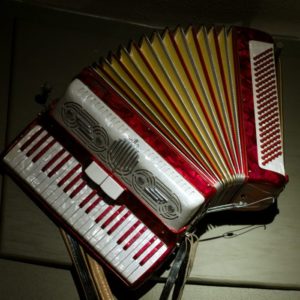The problem with Quint is its playing cricket using the rules of football.
The guy in the 'Quint Bass Review' video explains the fundamental issue starting at 2.15 to 3.00 which (before you even get into Quint bass) is simply the level of athleticism needed to play a simple scale on stradella: it isn't an easy or natural use of the hand. I stand by this possibly controversial statement, not only from personal experience when learning stradella scales (thinking what other instrument has the level of complexity to play such a basic unit of music) but also by listening to other far more experienced players. They take a deep breath and execute a fast stradella scale perfectly; then they do it again or play it in the context of real music and muff it. I've heard this time and time again - its not that they are bad players and haven't practised a lot, its that the athletic demands placed on the hand playing multiple scale sections are simply unreasonable - too dammed difficult! I'd contrast that with the ease of playing consecutive notes on a minor 3rd based system such as C or B systems.
Applying this to classical music (much of which is composed of partial scales up to around 3-6 consecutive notes) and you are being sent out to play cricket with a broken bat. Yes, it can be done with a lifetime of dedication, but the level of practice to perfect an awkward use of the hand is beyond most people's level of patience and time. Perhaps this is why many amateur quint bass players do a broken chordy melange type thing with their left hand because its so much easier than consecutive notes.
The other revelation from this video (which I hadn't previously understood) is that Quint bass casually jettisons the main advantage of stradella bass where the circle of fifths layout means that once one can play stradella in one key, you can play it in all keys with identical movements. Look further on in the video as he moves from the scale of C to D.
Normally a good idea from the richest country in the world with the wealthiest consumers will become globally dominant. The fact it hasn't and something else has for the classical accordion is revealing. To take the idea to absurdity, consider applying the quint bass system to the right hand and have left and right hands mirrored: a concertina crossed with a nightmare of complexity in a mirror.
A fifths based bass keyboard is ideally suited to the dance music for which it was conceived. If you've had most of your life embedded in stradella bass and want to branch out I can see why Quint looks tempting. I do have a strong sense though that after an initial rush, you are going to get stuck on a terribly torturous journey and that an average beginner learning a different bass system is going to quickly overtake you if they want to play a broader range of music.
Cricket and football are both great games - but there are sensibly two different approaches which fit each game perfectly.
I just started looking at the layout of Quint Free Bass on my 8X. At first it looked easy, since the basic pattern is Stradella that I am familiar with, but crossing to a different “2 row” group can be tricky. There are 3 octaves of notes with the lowest octave starting at
C1 and the highest octave starting at
C3. I have no problem when all the notes are from
C1 to
B1. As pointed out in the video, it’s the “Crossover” point (octave 2) from
B1 to
C2 that causes a problem. Also, the row change at the “Crossover” point (octave 3) from
B2 to
C3.
For example, take a walking bass twelve bar blues
I, IV, V pattern in different “Keys”:
C pattern: |C1, E1, G1, A1| |Bb1, A1, G1, E1|
F pattern: |F1, A1, C2, D2| |Eb2, D2, C2, A1|
G Pattern: |G1, B1, D2, E2| |F2, E2, D2, B1|
The pattern changes are different for each “Key” with a “2 row” shift for every “Key” except
C.
There are probably some rules (fingering) for playing notes over 3 octaves for the Quint system. This is what I do. I I am sure, is not the most efficient. When I play a note, I think of which octave the note is in and the two “Crossover” points: from
B1 to
C2 and
B2 to
C3. That determines which “2 row” group of buttons I am in. This works, but it really slows me down. It’s like when I was learning Spanish in high school. I would think of the word translation to English. This was awkward and slow. It was only when I could “think” directly in Spanish, that I started to improve. I don’t know if I ever will teach this ole brain to “think” in Quint Free Bass.
John M.

